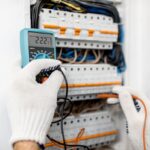With the world moving towards renewable energy sources, the solar panels have become very favorable among both homeowners and companies. Their expanding presence is not only green, but also a saving of money on the energy bills in the long-run perspective. But when you are thinking about switching to solar power, what will this cost me may be one of your first questions. The initial look at the solar panel cost may be overwhelming. It does not entail the sticker price alone; there are a lot of things at play that can make a big difference in your bottom line. We shall explore what makes solar panels expensive in a manner that you can make a wise decision on whether to invest in clean energy.
Factors that Affect Solar Panel Pricing
In the case of solar panel price, there are a few factors to be taken into consideration. First, the kind of technology employed might have a great impact on prices. Monocrystalline panels are usually more efficient but usually cost more than the polycrystalline ones.
Costs also differ depending on the size and capacity of your solar system. Bigger systems to serve more energy demands will be naturally more expensive.
Neither should installation costs be neglected. These may change according to the intricacy involved in the arrangement and the local labor charges.
The government incentives can also be significant in the overall pricing in that it offers rebates or tax credit to reduce your initial investment. These components are important in making an informed decision on solar energy to your home or business.
Material and Technology Used
Solar panels are made by using materials and technology, which is critical in the cost of the solar panels. Solar cells like monocrystalline, polycrystalline and thin-film have varying price tags and efficiencies.
Monocrystalline panels are usually the most efficient panels, but they are also the costliest because of the production process. Poly crystalline alternatives tend to be cheaper but can have a lower efficiency rate.
Certain applications can be addressed with thin-film technology providing flexibility and lightweight. Its reduced efficiency however may necessitate more massive installations to match the energy output.
In addition to cell type, the quality of inverter is also important. High-performance inverters affect the cost of conversion positively and negatively.
Other innovations such as bifacial solar panels collect sunlight on both sides thus producing more energy but at greater fixed cost. The decision you make affects the overall solar panel price either directly or indirectly (via long term energy bill savings).
Size and Capacity of the System
The dimensions and power output of a solar panel system is important in determining the cost. The bigger systems typically need a higher number of panels and this naturally adds to the upfront investment.
A system needs to be sized, and you need to consider your energy requirements. The more electricity is used by a household, the more likely that people will need a bigger array to cover such expenses.
Capacity is in kilowatts (kW). Increased capacity systems have the ability to produce increased power but this also comes at a higher cost tag since more materials and installations are required.
Selecting an appropriate strike between size and capacity is also making sure you are investing prudently without spending much on functions you do not need. This customized solution can be used to maximize performance and savings in the long term, and it will be simpler to handle long-term costs related to the adoption of solar energy.
Installation Costs
Installation cost is another big percentage of the solar panels cost. These costs may range across a wide range on the basis of a number of factors.
The cost of labor varies according to locality and specialization. A professional installer can charge more, but result in a high quality of work and your system will run well in the years ahead.
It is also dependent on the complexity of your roof. Home installation is more difficult and expensive when your home is of an odd shape and or more than one level.
Other factors such as permits and inspections make the bill even more. It can be a process that needs certain paperwork before one can start installation, which is usually a local regulation.
Any upgrades that may be required to electrical systems or even roofing may create additional expenses. These variables should be evaluated at an initial stage of the planning process in order to budget effectively.
Understanding the Cost Breakdown of a Solar Panel System
solar panel cost may be divided into various components when you look at them. This will not only make you know what you are paying but you also get a glimpse of the savings you can make.
The key components consist of the panels themselves which may differ depending on the type and effectiveness of the panel. The quality of the panels can be higher at the expense of a higher price tag, yet in many cases, their performance will be higher in the long term.
Next is the inverter cost. This is an important device that transforms direct current on your solar panels to alternating current that helps light up your house. The option of using string inverters and micro-inverters may have a great influence on the cost.
Also, we have mounting equipment and installation services. These costs can vary widely depending on your roof, or the conditions of the ground.
Permission and inspection stipulated by the local laws are also to be considered. All these bureaucracies are required in the process of ensuring safety but increase additional costs to the general budget.
Do not forget to consider warranties and maintenance schemes when considering overall cost of solar panels. Good warranty may raise initial costs but gives comfort in the future as far as repairs or replacement is concerned.
With the knowledge of every piece to this puzzle, you will be in a better position to analyze quotes of installers, and decide whether to invest in renewable energy or not.
Government Incentives
The government incentives are important steps in increasing the availability of solar energy. These schemes are to advise homeowners and businesses to use renewable energy.
Solar panel systems can be highly subsidized by tax credits, rebates and grants, which will dramatically reduce the initial investment. As an example, the federal solar tax credit will enable you to claim a high percentage of the cost of your installation as a deduction on your federal tax.
Other states will have other incentives that will differ a lot based on the policies of the locality. This may involve the use of performance based incentives or even cash rebates after installation is carried out.
In addition, programs sponsored by governments usually offer means of financing including low-interest loan services. These financial grants help make the transition to no longer using solar power less frightening to most households.
By keeping up with these opportunities, you may be able to get the most out of savings and still be a part of cleaner energy solutions.

















Leave a comment